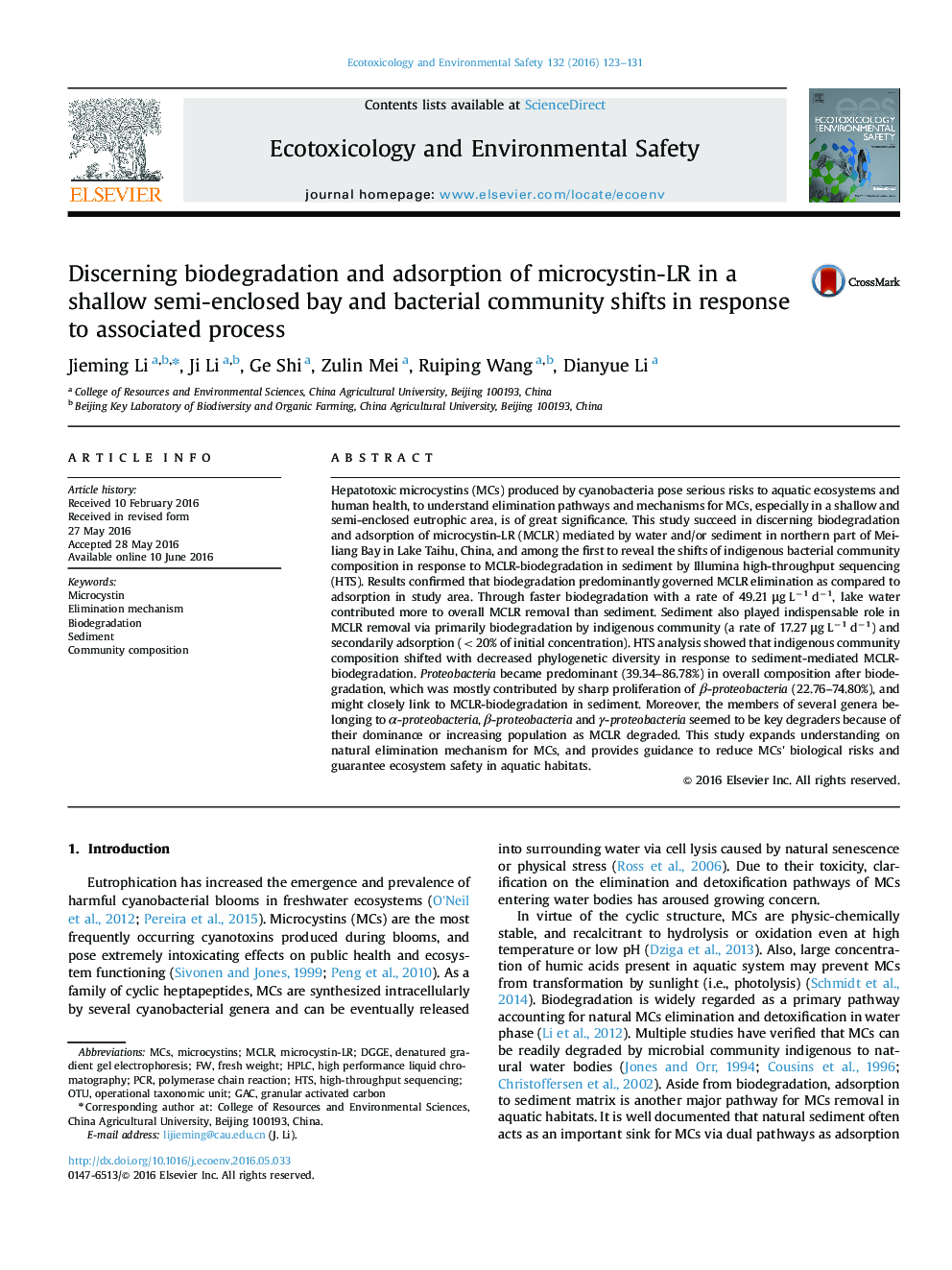| Article ID | Journal | Published Year | Pages | File Type |
|---|---|---|---|---|
| 4419110 | Ecotoxicology and Environmental Safety | 2016 | 9 Pages |
•Microcystin-LR biodegradation outweighed adsorption in northern part of Meiliang Bay.•Sediment drove microcystin-LR removal via mostly biodegradation and secondly sorption.•Faster microcystin-LR biodegradation in lake water than sediment-mediated removal.•Bacterial community composition in sediment shifted in response to biodegradation.•Members in genera of α-, β-, and γ-proteobacteria might be key degraders in sediment.
Hepatotoxic microcystins (MCs) produced by cyanobacteria pose serious risks to aquatic ecosystems and human health, to understand elimination pathways and mechanisms for MCs, especially in a shallow and semi-enclosed eutrophic area, is of great significance. This study succeed in discerning biodegradation and adsorption of microcystin-LR (MCLR) mediated by water and/or sediment in northern part of Meiliang Bay in Lake Taihu, China, and among the first to reveal the shifts of indigenous bacterial community composition in response to MCLR-biodegradation in sediment by Illumina high-throughput sequencing (HTS). Results confirmed that biodegradation predominantly governed MCLR elimination as compared to adsorption in study area. Through faster biodegradation with a rate of 49.21 μg L−1 d−1, lake water contributed more to overall MCLR removal than sediment. Sediment also played indispensable role in MCLR removal via primarily biodegradation by indigenous community (a rate of 17.27 μg L−1 d−1) and secondarily adsorption (<20% of initial concentration). HTS analysis showed that indigenous community composition shifted with decreased phylogenetic diversity in response to sediment-mediated MCLR-biodegradation. Proteobacteria became predominant (39.34–86.78%) in overall composition after biodegradation, which was mostly contributed by sharp proliferation of β-proteobacteria (22.76–74.80%), and might closely link to MCLR-biodegradation in sediment. Moreover, the members of several genera belonging to α-proteobacteria, β-proteobacteria and γ-proteobacteria seemed to be key degraders because of their dominance or increasing population as MCLR degraded. This study expands understanding on natural elimination mechanism for MCs, and provides guidance to reduce MCs' biological risks and guarantee ecosystem safety in aquatic habitats.
